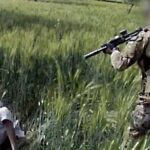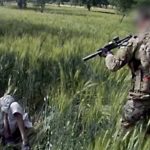The Brereton Report’s Detailing of Historical Australian War Crimes: Part 1

The laws of armed conflict or international humanitarian law (IHL) are a set of rules governing what can and cannot be done during war.
The four Geneva Conventions and their protocols comprise the majority of the law, with almost all nations agreeing – in principle – to follow them.
As the just released Brereton report reveals, the laws are often breached. Indeed, not only does the report detail a redacted account of the recent 39 alleged murders in Afghanistan, but it also provides a history of Australian war crimes pertaining to the Boer War through to the First Gulf War.
The six conflicts covered in the report’s historical chapter cover the killings of detainees, disconnects between orders and policy and what transpired on the ground, as well as other illegal practices.
The authors note that while our nation is “firm, but fair” in investigating the war crimes of others, it often neglects to cover its own.
So, in this article and the next, Sydney Criminal Lawyers is providing a rundown on some of the more significant crimes perpetrated in the various theatres of war.
The Second Boer War
Stemming from 1899 to 1902, the Second Boer War was a conflict fought in South Africa between the British Empire and the Boers (mainly Dutch settlers). Australian troops fought within the ranks of the British. And the IHL of the time was known as the customs of war.
Although not the only incident of Australian troops committing Boer war transgressions cited by Brereton, the Breaker Morant case is the only prosecution involving serious war crimes, and it’s still well-known today due to the 1980 movie.
The case involved the court martialling of three Australian lieutenants, two of whom – Peter Handcock and Harry Morant – were executed over the killings of nine Boer prisoners of war.
Although, the pair were acquitted of the murder of German missionary Reverend Carl Heese.
The Australian officers always claimed that in killing the captured troops, they were simply acting upon the orders of their superiors.
This is likely the case, which means more senior officers were breaching war customs, and the British trialling and execution of Morant is usually seen as a way of deflecting from this.
The Boxer Rebellion
Taking place over 1899 to 1901, the Boxer Rebellion involved Chinese militant secret societies rising up against European and US held trading territories in China.
Australia sent in naval troops to help British forces in several battles. And the imperialists subdued the rebellion.
The report outlines that Australian troops were involved in the subsequent occupation of Beijing, which was “marked by wanton violence and looting”.
But while there are accounts of the French killing prisoners and the Americans assaulting civilians, our troops, evidently, only got into the illegal looting.
The First World War
Commencing in 1914, by the time of the Great War, Australian troops were governed by local disciplinary codes based on British laws during active combat. But in peacetime, the codes were linked to locally enacted military regulations. A system that continued until the 1980s.
In terms of IHL, there was a swag of Hague Conventions that had been passed between 1899 and 1907 that then applied.
The First World War ended in 1918, and since then, there has been a series of “persistent allegations” against Australian troops. But none were ever pursued at the time.
It wasn’t until 2014, that allegations emerged via a 1960 recording that troops sent over to today’s Papua New Guinea to take German positions in 1914, executed a number of German and local prisoners of war following the Battle of Bita Paka.
Over 1914, a number of Australian troops were court martialled over looting allegations against German nationals in German New Guinea. And after serving their time, the convicted soldiers then accused their superiors of doing the same and a second wave of convictions took place.
Sparked by the killing of an NZ soldier by a local thief in Palestine, the 1918 Surafend Incident saw Anzac and Scottish forces ransack the murderer’s village, killing locals and burning it down. The troops then did the same to a nearby Bedouin camp. The death toll accounts range from 20 to 137.
The final World War One war crimes listed by the report are the numerous allegations of the killings of captured German soldiers along the Western Front. And while these accounts were widespread, they were little officially reported.
Although, British novelist Robert Graves in his 1929 war biography relates that while initially Canadian troops were known for perpetrating the worst violence against prisoners of war, Australian troops later took that honour.







